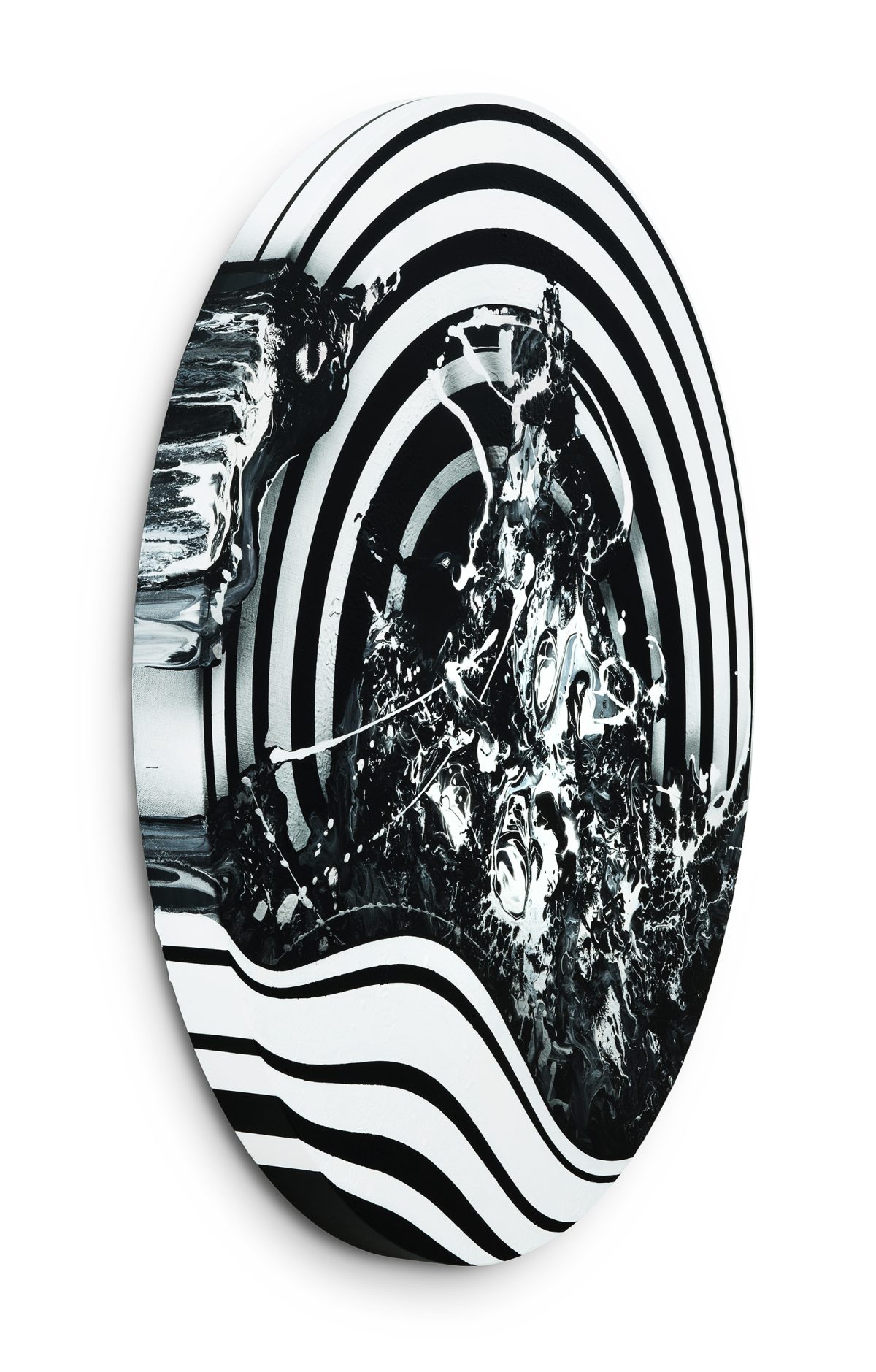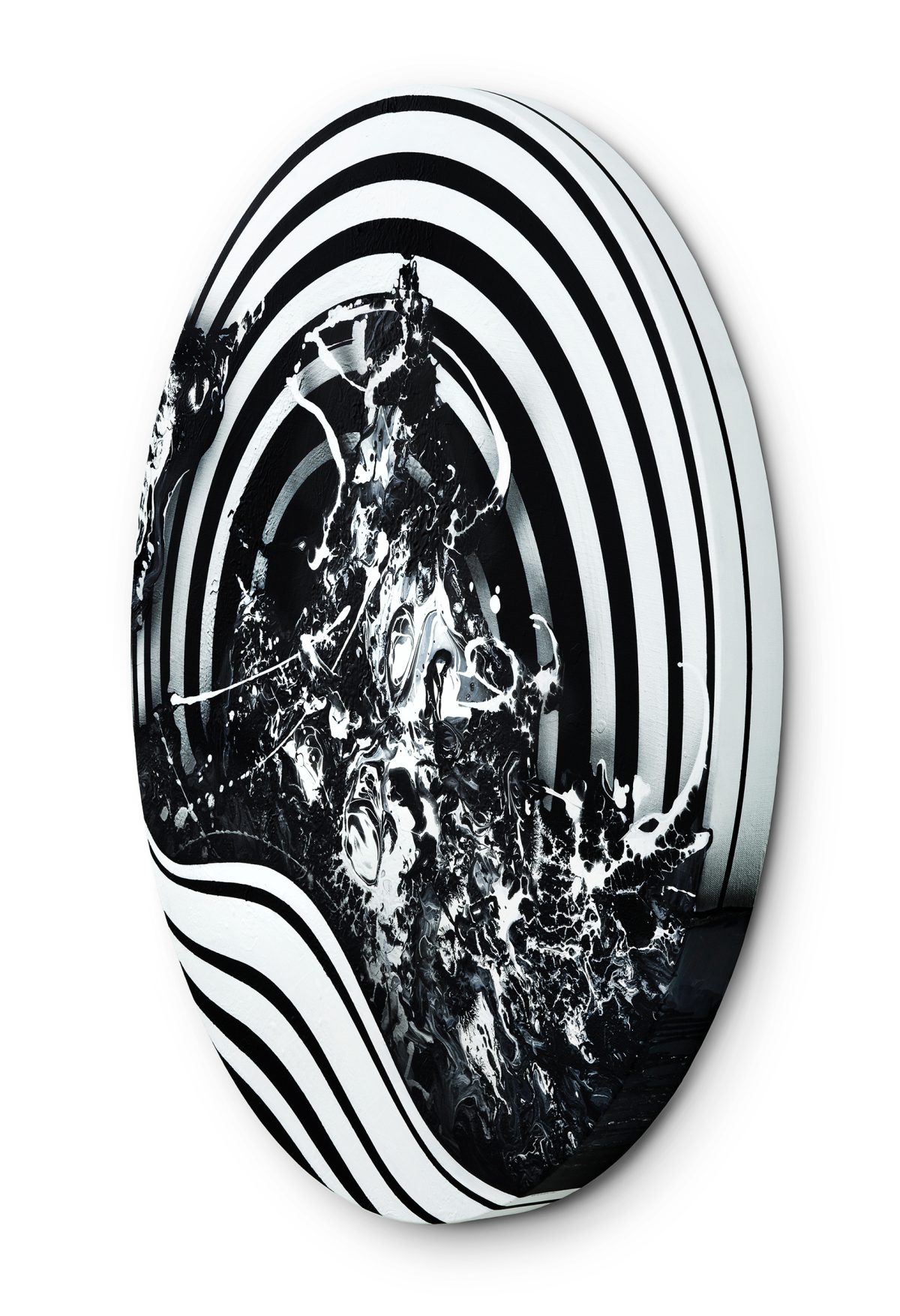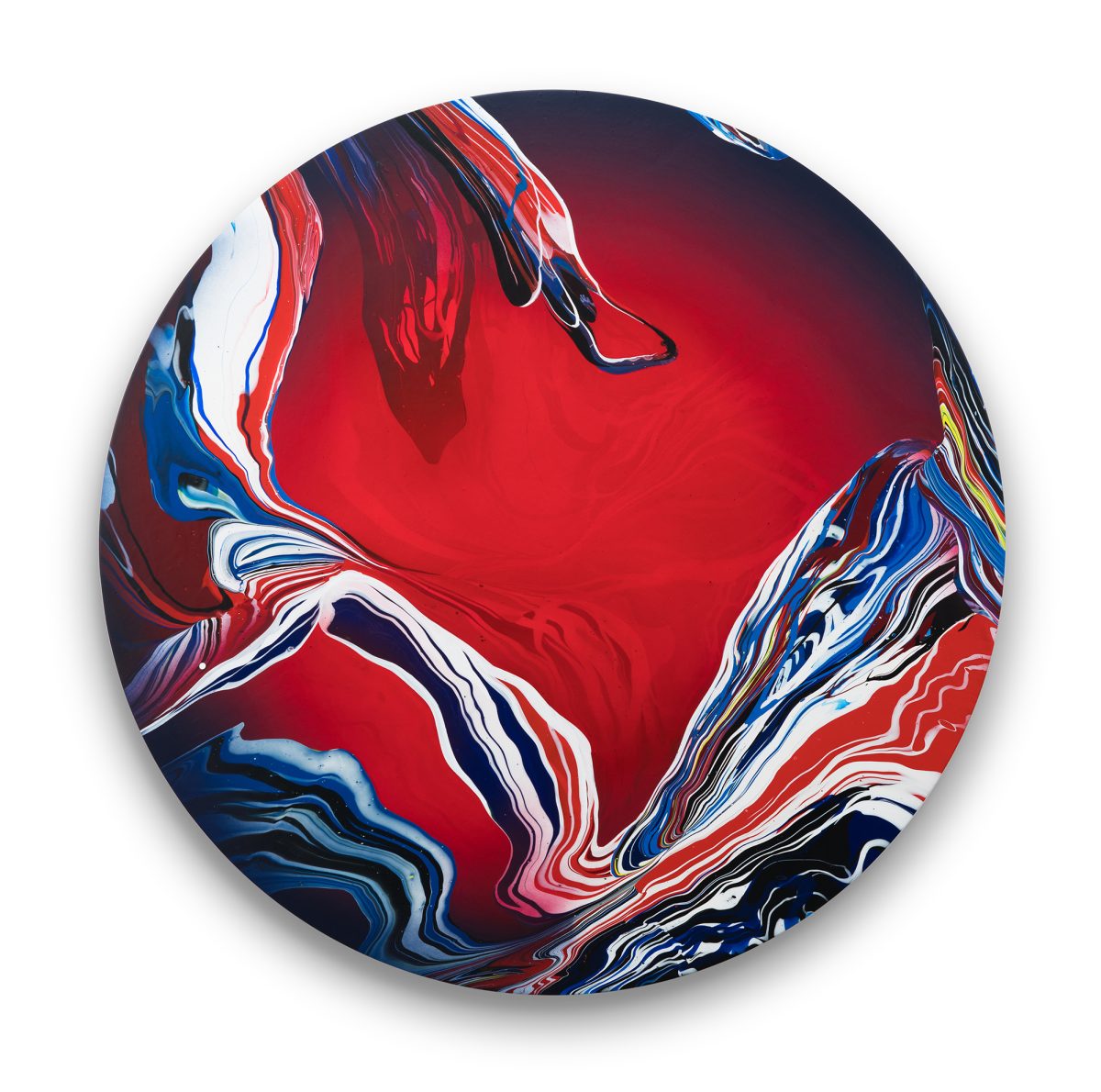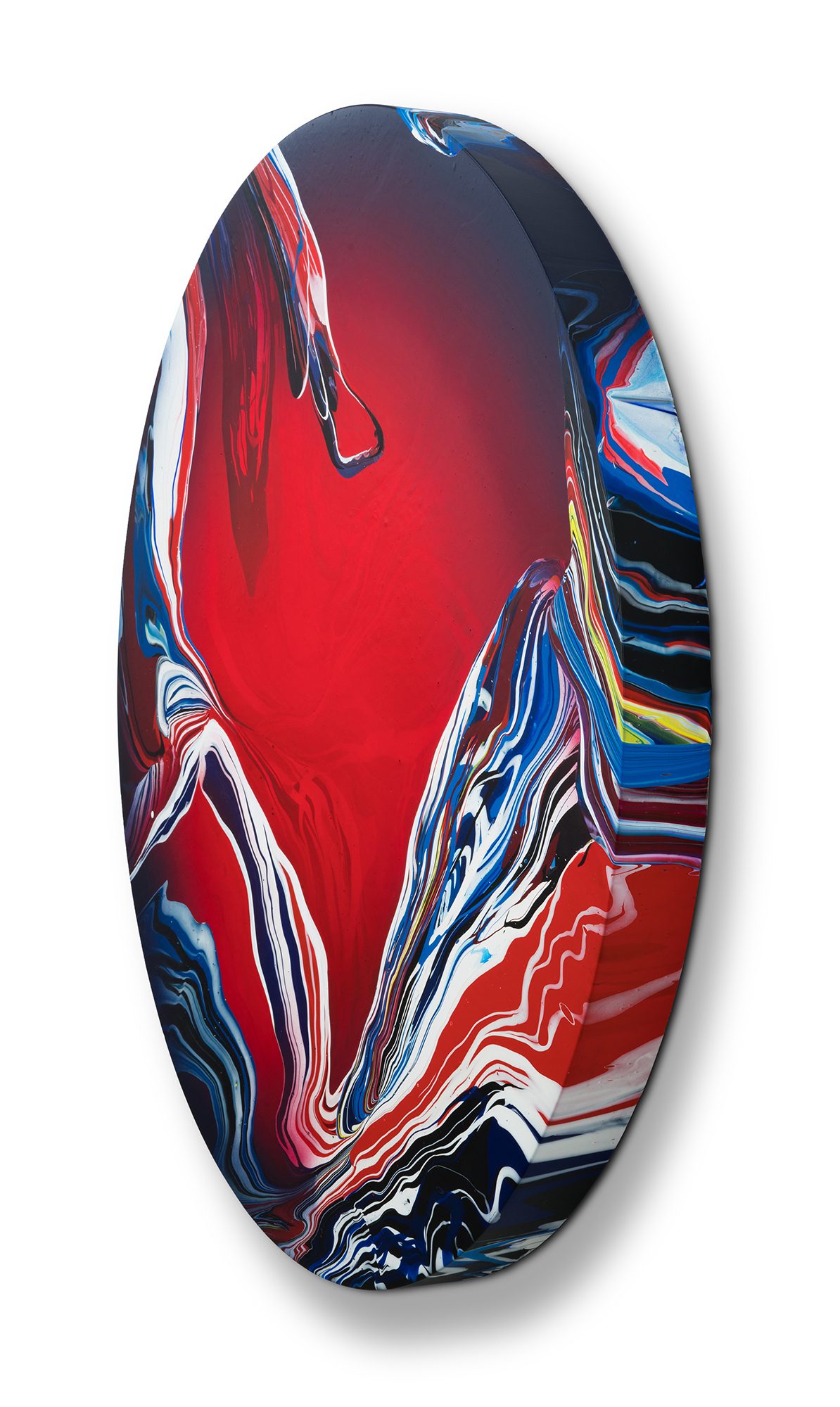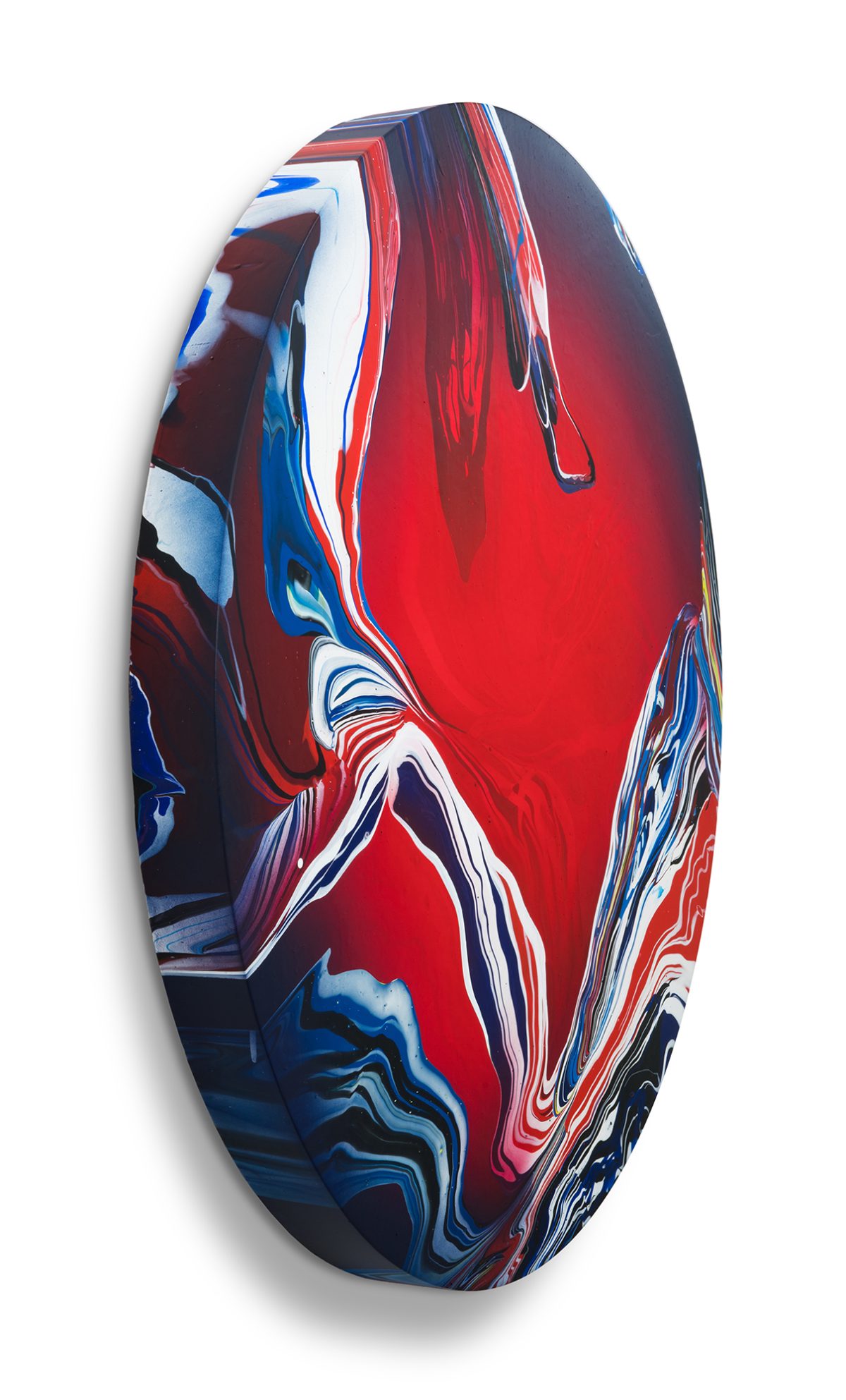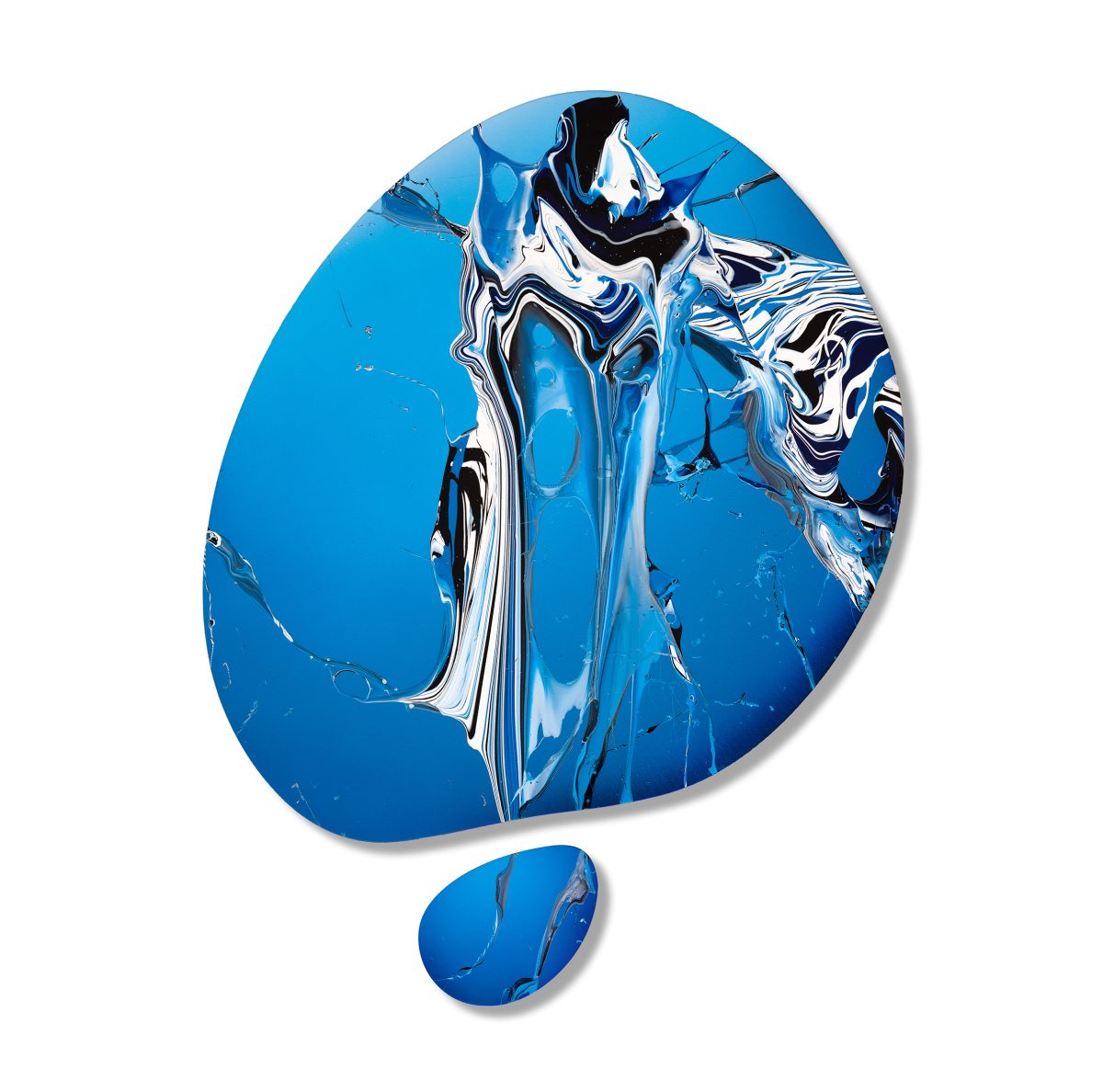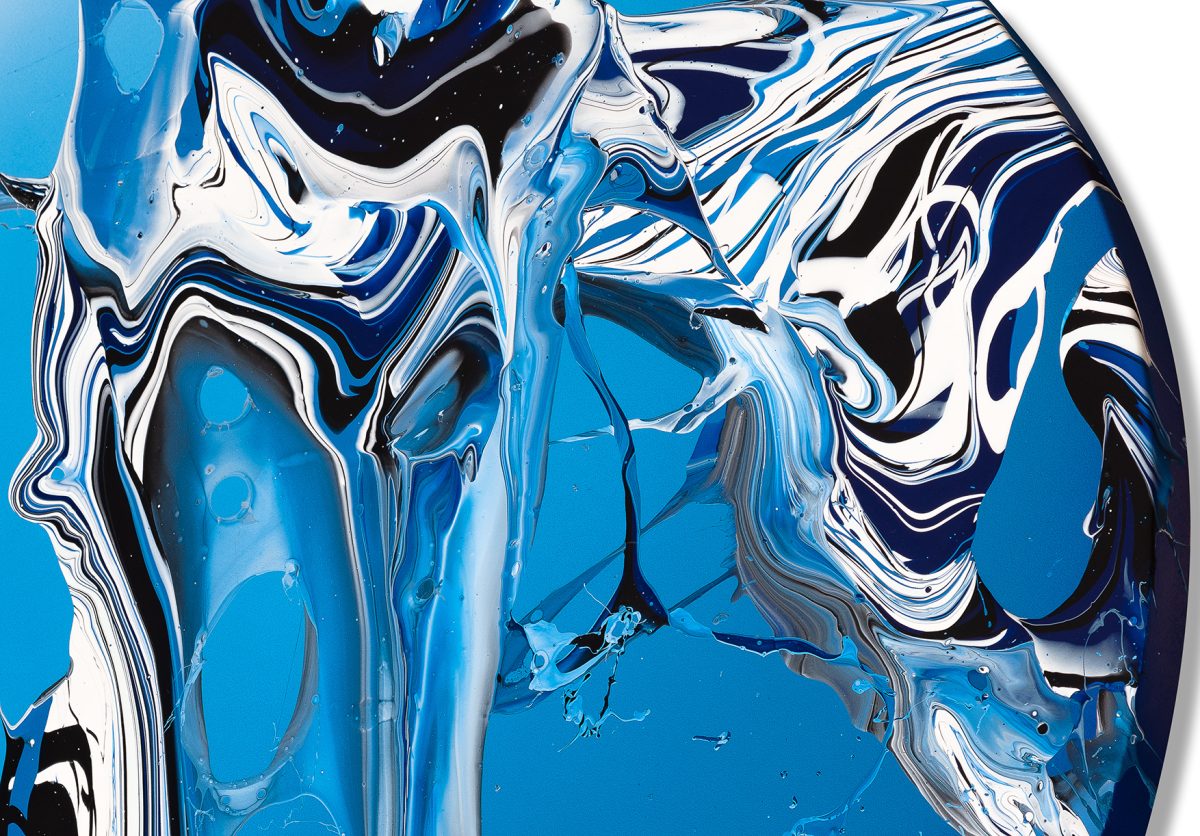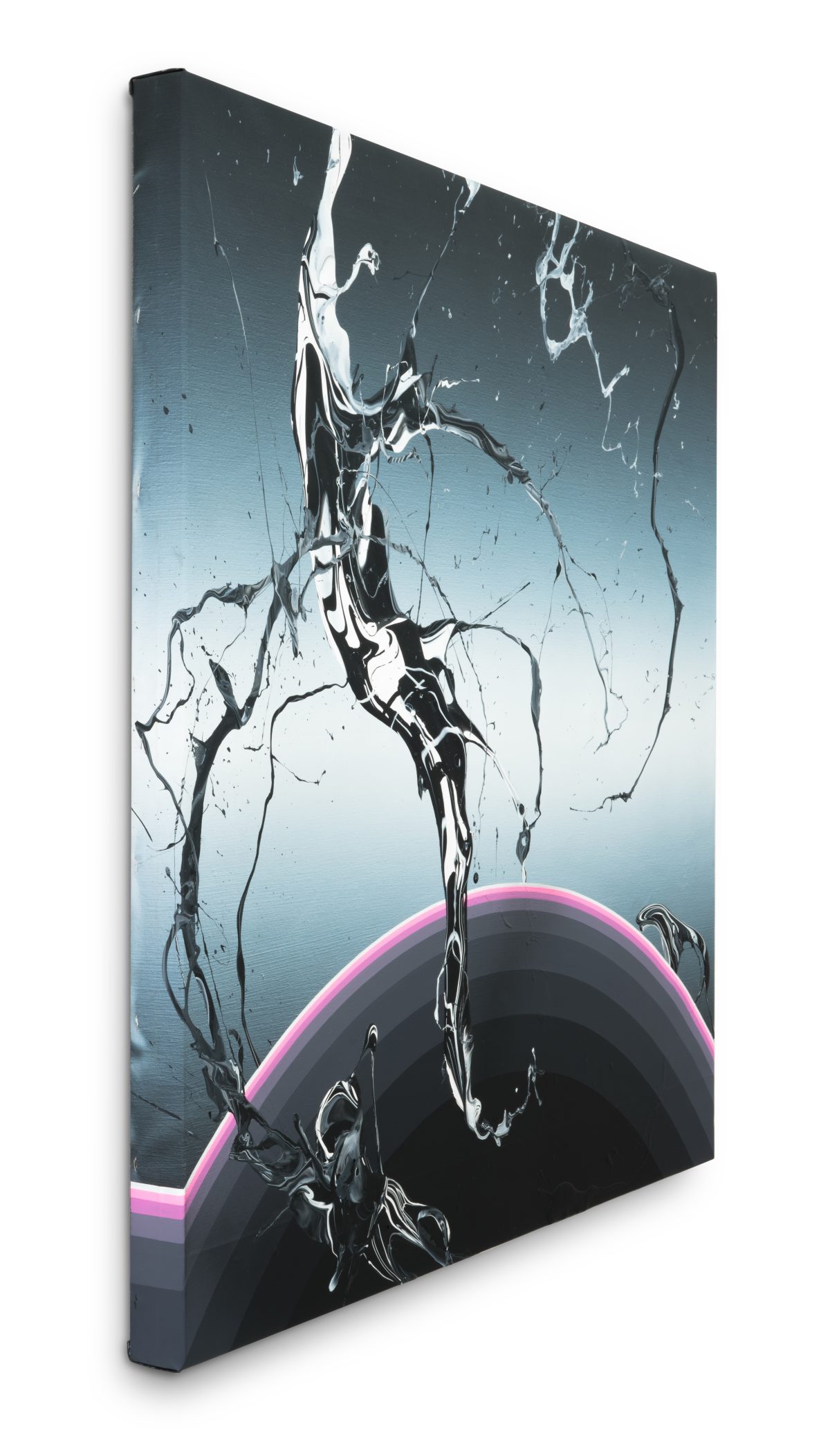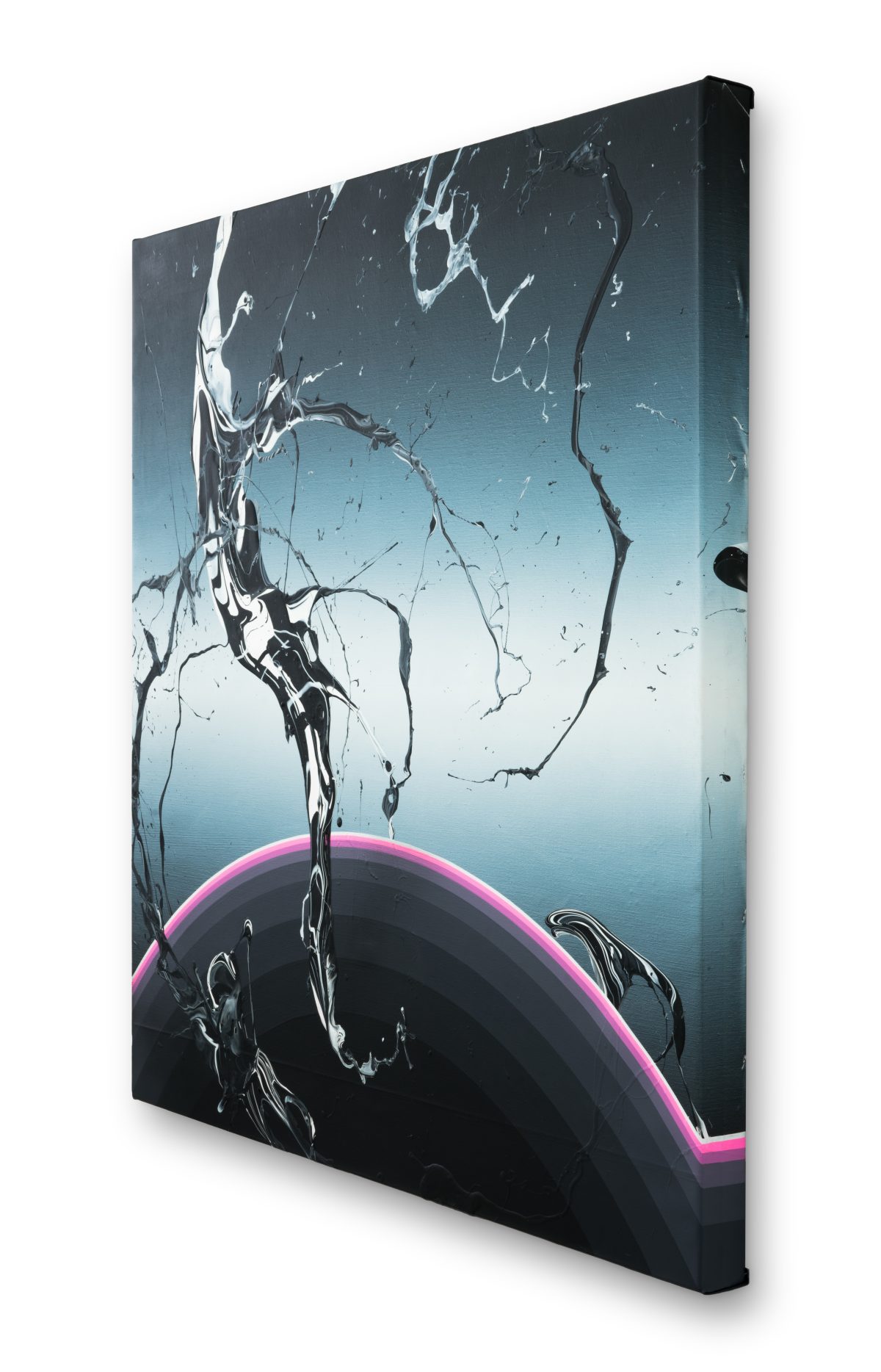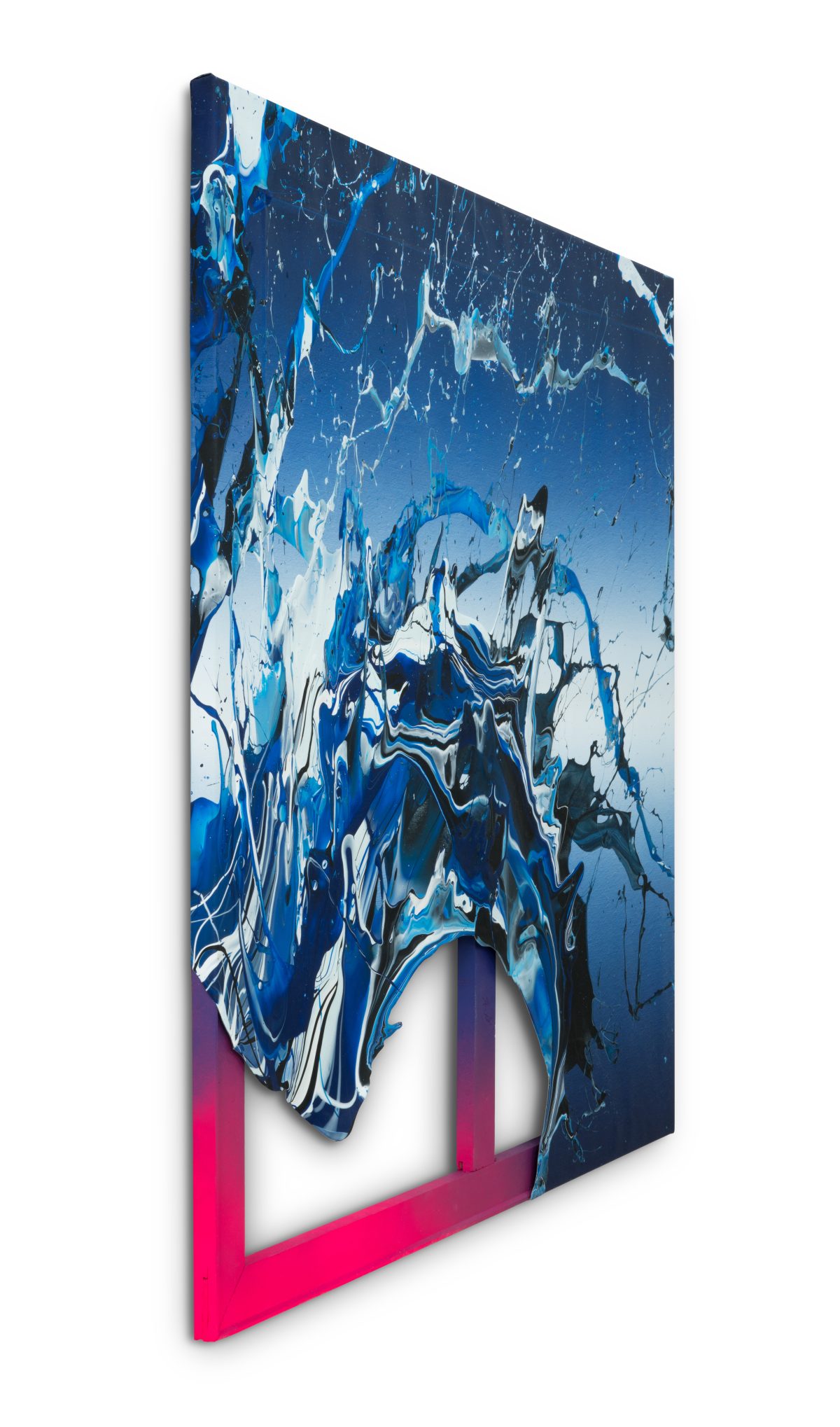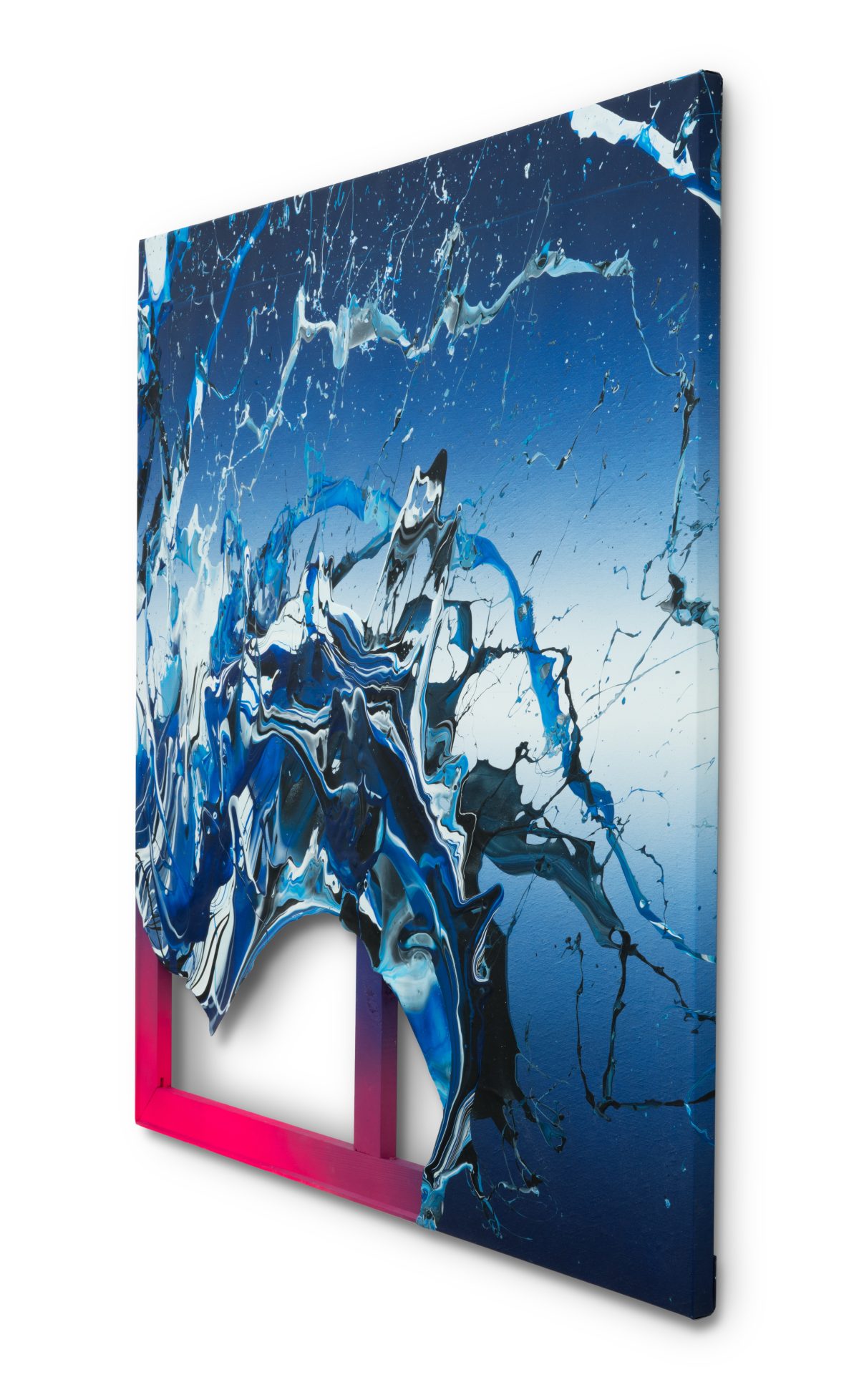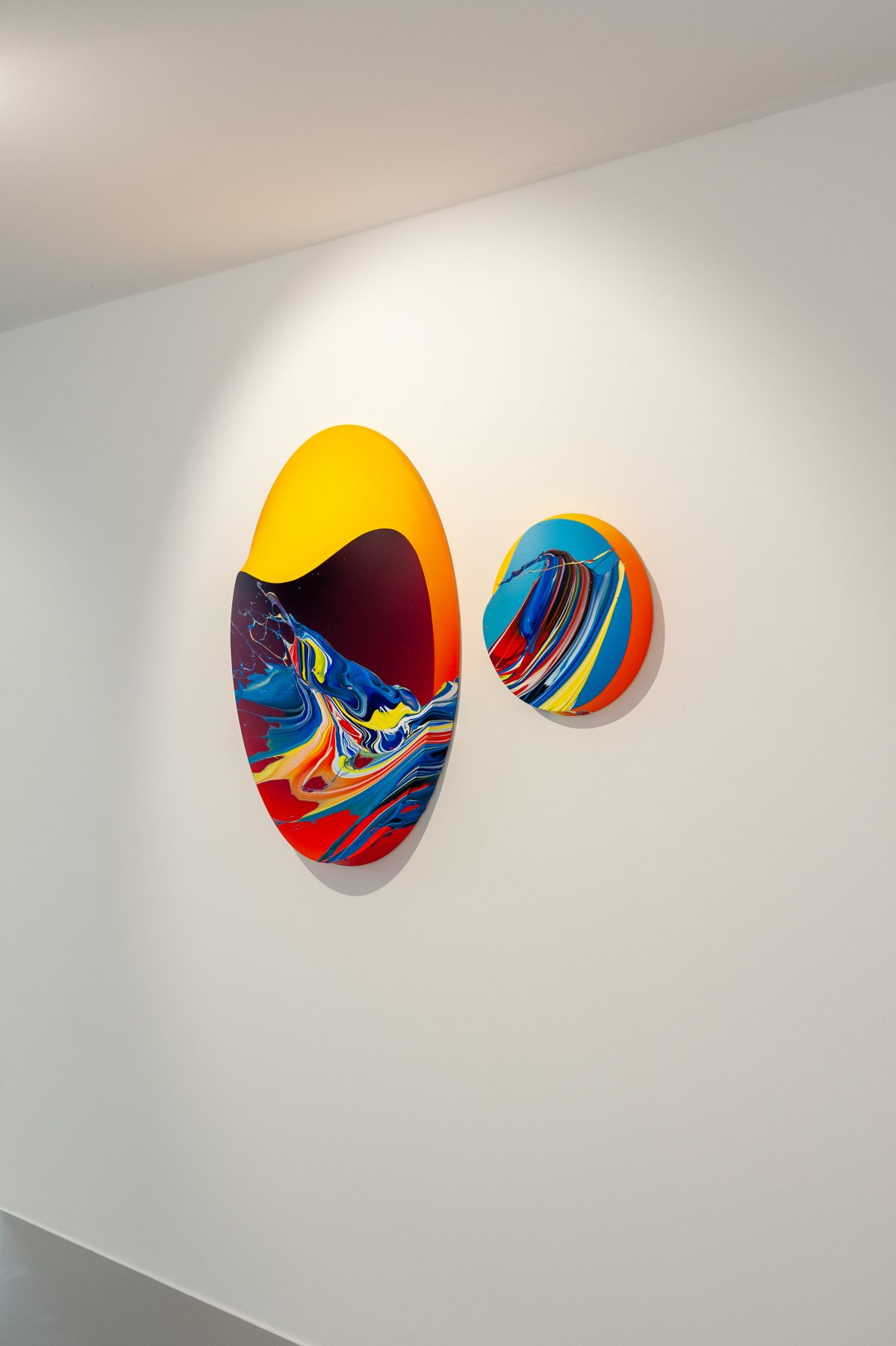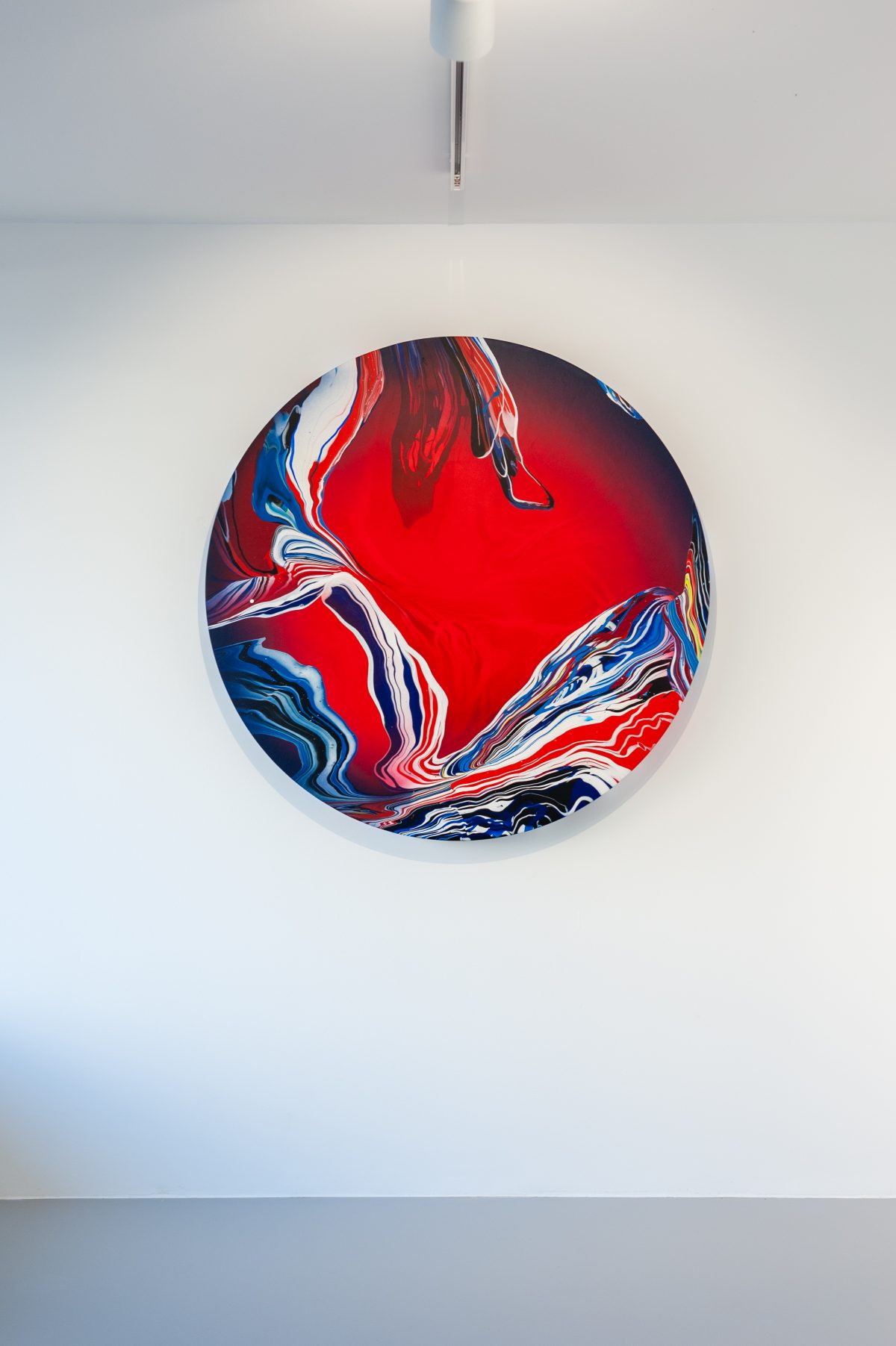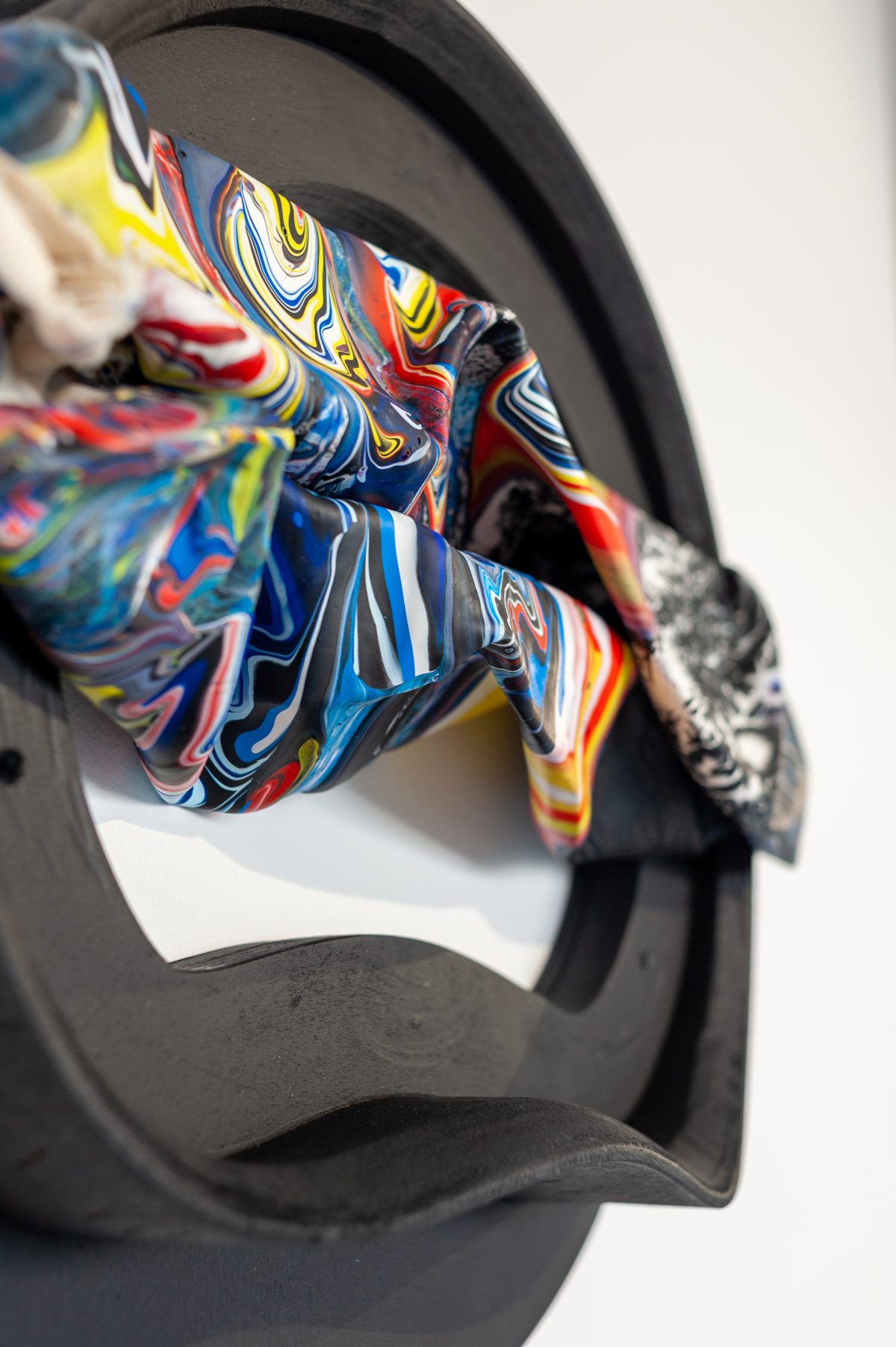About the exhibition:
It’s more than a duo show, where each artist brings their works to a gallery where they are exhibited side by side. It’s an experiment. It’s a proof of trust. It’s two artists, each with their independent art practice, continuously shipping each other’s paintings from one studio to the other to overpaint, rework, reshape them as they see fit.
The process conveys memories of Erased De Kooning Drawing by Robert Rauschenberg, who in 1953 asked the abstract painter Willem De Kooning to provide him with a drawing so he could erase it and declare the new work his own. Here too, the consented negation of another artist’s work is essential. Yet, it is mutual, repeated, constructive and conducive to a new experience. It does not primarily aim at a conceptual point. Its ultimate goal is an unprecedented, incarnated experience. To understand what exactly plays out on and around the canvas, we must first look at their artistic quests individually.
Where Katrin Fridriks, who was born in 1974 in Iceland, explores speed, gravity and flow through the means of paint, Jan Kaláb, who was born in 1978 in Czechoslovakia, at a time when the Iron Curtain still existed, focuses on depth, geometry and slow motion. While they both started with street art and graffiti, they are – technically, visually and spiritually – also connected to major art movements of the 20th century and have evolved to exhibit their art in galleries all over the world. Where Fridriks’ work recalls Abstract Expressionism, Kaláb’s is reminiscent of Geometric Abstraction.
At first sight, their works look like opposites, but this hides deep similarities: Where Fridriks splashes paint in seconds on a flat canvas after having prepared her tools and her body for days, Kaláb works slowly on custom-shaped canvases, applying multiple layers of paint after carefully drafting out the works on Photoshop to obtain the desired effect.
They certainly share a love for contemporary color schemes, but where Kaláb’s works create a vortex in the world and can even look like glitches in reality when they are taken out to the street from the gallery, each of Fridriks’ works is a world of its own, with paint running over the surface to look like rivers or pathways and seeds growing into organic structures.
Their similarities and differences can both be traced to how they came to develop their signature practices from writing in the first place: Kaláb, working with his street art name “POINT”, evolved from the flat surface of the wall to using 3D letters. When moving on to the gallery, he came to only preserve the geometrical aspect of those letters, developing his shaped canvases. When Fridriks, who trained in Zen calligraphy, moved on to create abstract paintings, she preserved the gestural aspect of writing words. And this, geometry vs. gesture or action is the crux of their difference. Coincidentally these are not only two ways into abstraction – with different giants like Kandinsky or Mondrian leading the way – but also two major approaches to writing, namely as a product that is created by putting together pre-coded geometrical forms – letters – to make meaning or else as a physical action (namely the “writing of writing” as I called one of the first exhibitions I curated in Paris). With an eye on letters and their fixed forms, we see geometry. With an interest in how the code is activated on the occasion of writing something, we see action and personality. Take away the letters and words, keeping only the geometrical interest and you get Kaláb’s work; take them away keeping the action of writing and you get Fridriks’.
Yet, a presentation of their works would be incomplete without the question of movement. Jan Kaláb, like František Kupka, Paolo Scheggi or Hilma af Klint, creates forms in the process of transformation. We must see his shaped canvases as being in motion while being still. Even though the shape-shifting takes place in the canvas itself as much as the picture on the canvas, Kaláb’s abstractions connect specifically to these three giants because their shape-shifting is best characterized as morphing (whereas Piet Mondrian’s works are either still or flicker and Kazimir Malevich’s or El Lissitzky’s forms speed straight across the canvas or drift around it). While motion in stillness is also essential in Fridriks’ works, the movement here is neither morphing nor flickering or drifting. It’s explosion and flow. This fundamental difference has important implications: Firstly, the works’ durations and kinds of energy differ considerably. Morphing like drifting are slow and long, while explosions are fast and short. Yet, to contemplate them still takes time and opens up an open process of looking. The reason is strikingly simple: An explosion, stopped in mid-air or fixed on canvas, is nearly infinitely complex. Unsurprisingly, then, the viewers begotten – for each relevant artwork creates a specific spectatorship – by Kaláb and Fridriks also differ. Fridriks’ paintings store motion energy to be released each time someone looks at them with attention, even when they stand perfectly still. It’s, as it were, our mirror neurons that do the moving around. Kaláb’s works in turn beget a mobile viewer who moves through space to look at them from different angles, trying, among other things, to understand the illusory play of light and shadow. Yet any attempt to break free of it would be silly – for painting is precisely “a pleasant illusion”, as G.E. Lessing already summed up in 1766 following nearly two millennia of painting theory.
What happens when their practices meet on one single surface or shape? A perfect storm of contradicting histories, viewerships, emotions and temporalities, constantly pulling in different directions and offering different experiences. Cool geometry and hot action; slow motion and frozen explosion; flowing and morphing; breathing and splashing to reach out, connect.
Dr. Klaus Speidel
Vienna, May 2023
For further information on the artists please visit their individual websites here: Katrin Fridriks / Jan Kaláb
Gallery statement:
Having worked with Jan Kaláb for several years already and following and collecting Katrin Fridriks’ work for about the same time as well, the subject matter of their respective art was already familiar to the gallery. We have had plenty of experience producing exhibitions with artists groups who collectively work on the same painting (and having done so together for years) or showing a duo/group of artists displaying separately produced works under a common subject matter. And we have had rare occasions where two artists who never worked with each other got together and busted out a magnificent mural going over and over each other but to send a whole body of work to another artist – whom yes, you know of, follow and respect in his work and even met once – to continue working on was unprecedented in the ten years of running the gallery.
The level of trust required and involved in this project is very high and extraordinarily rare. Unique, fully finished works, countless hours of labor, powerless in the hands of another far away, with no margin of error… Needless to say that after having been part of numerous conversations in the course of the creative process and witnessing the results of this collaboration, which exceeded any of our expectations and imaginations, the experience was sometimes hair raising, very exciting, awe inspiring, and most of all… growing.

